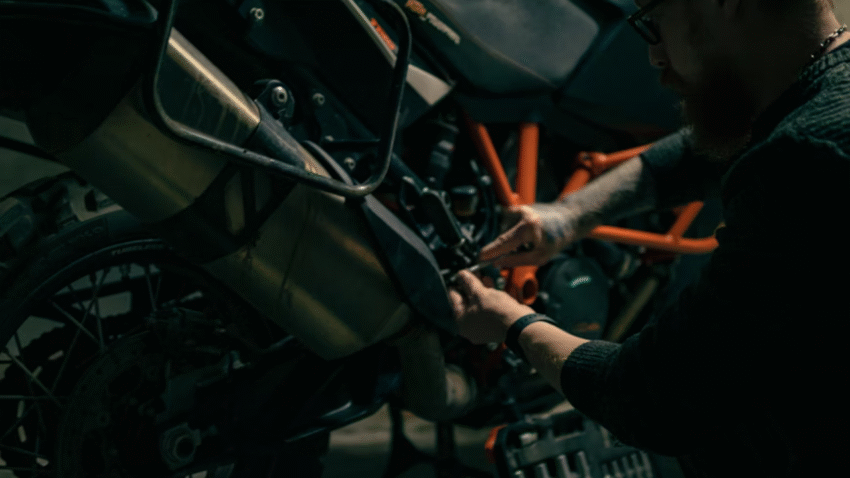Introduction
Is your garage door looking faded, chipped, or outdated? A fresh coat of paint can dramatically boost your home’s curb appeal. Learning how to paint a garage door like a pro will not only make it look brand new but also protect it from weather damage. With the right preparation, tools, and technique, you can achieve a flawless, long-lasting finish without hiring a professional.
Why Painting a Garage Door Matters
Your garage door is one of the largest and most noticeable features on your home’s exterior. Regular painting:
- Enhances curb appeal: A well-painted garage door makes your home look polished and well-maintained.
- Protects against weather: Quality paint helps guard against sun, rain, wind, and temperature changes.
- Prevents rust and corrosion: For metal doors, paint acts as a protective barrier.
- Saves money: Extends the lifespan of your door and delays costly replacements.
Whether your door is metal, wood, or fiberglass, a fresh coat of paint can completely transform its appearance.
Step-by-Step Guide to Painting a Garage Door Like a Pro
1. Choose the Right Time and Conditions
Pick a day with mild temperatures (50–75°F) and low humidity. Avoid painting in direct sunlight or when rain is expected within 24 hours—these conditions can cause streaking, blistering, or poor adhesion.
Pro Tip: Morning or late afternoon is often ideal to avoid harsh midday sun.
2. Gather Your Tools and Materials
You’ll need:
- Exterior-grade paint (acrylic latex for most materials, oil-based for certain metals)
- Exterior primer (for bare metal or wood)
- Paint rollers (small and medium) and brushes
- Drop cloths or plastic sheeting
- Painter’s tape
- Bucket, sponge, and mild detergent
- Sandpaper (120–220 grit) or wire brush for metal doors
- Ladder (for tall doors)
- Safety gear: gloves, safety glasses, and mask
3. Prepare the Door Surface
Clean Thoroughly
- Mix mild detergent and water in a bucket.
- Wash the door with a sponge to remove dirt, grease, and dust.
- Rinse with clean water and let it dry completely.
Remove Old Paint and Rust
- Scrape away loose paint with a putty knife.
- Sand the entire surface lightly to improve paint adhesion.
- For metal doors, use a wire brush to remove rust spots, then wipe clean.
Repair Damage
Fill cracks or holes in wood doors with exterior wood filler. For dents in metal doors, repair them before painting (see our guide on How to Fix Dents in a Metal Garage Door).
4. Protect Surrounding Areas
- Lay drop cloths to protect the driveway and floor.
- Use painter’s tape to mask around the edges, weather stripping, handles, and windows.
- If possible, disconnect the garage door opener and manually move the door to a comfortable height for painting.
5. Apply Primer (If Needed)
Primer is essential for bare metal, untreated wood, or when changing from a dark to a light color.
- Apply a thin, even coat of exterior primer using a roller for large areas and a brush for edges and grooves.
- Allow it to dry completely according to the manufacturer’s instructions before applying paint.
Pro Tip: For metal doors, choose a rust-inhibiting primer to prevent future corrosion.
6. Apply the First Coat of Paint
- Stir your paint thoroughly before starting.
- Using a roller, apply paint in long, smooth strokes, working from top to bottom.
- Use a brush to cut in around edges, panels, and trim where the roller can’t reach.
- Avoid overloading the roller or brush to prevent drips.
7. Let It Dry, Then Apply a Second Coat
- Allow the first coat to dry completely (usually 4–6 hours, but check the label).
- Lightly sand any imperfections before applying the second coat.
- Apply the second coat in the same top-to-bottom method for a consistent finish.
Pro Tip: Two thin coats are better than one thick coat—this ensures even coverage and durability.
8. Final Touches and Cleanup
- Remove painter’s tape while the paint is still slightly tacky to prevent peeling.
- Reattach any hardware you removed for painting.
- Clean brushes and rollers immediately to extend their life.
Common Mistakes to Avoid
- Mistake: Painting in direct sunlight.
Solution: Work in shaded conditions to avoid streaking and quick drying. - Mistake: Skipping surface prep.
Solution: Clean, sand, and repair the door before painting for best adhesion. - Mistake: Using interior paint.
Solution: Always choose exterior-grade paint designed to withstand weather. - Mistake: Rushing between coats.
Solution: Allow proper drying time to prevent tackiness and peeling. - Mistake: Ignoring primer for bare surfaces.
Solution: Use primer to ensure smooth, long-lasting results.
Extra Garage Tips & Hacks
- Match Trim for a Unified Look: Painting your garage door and trim the same color can make your home look more modern.
- Add a Protective Clear Coat: For extra durability, apply a UV-protective clear coat after the final paint layer dries.
- Consider Faux Finishes: A wood-grain paint technique can add a high-end look to metal doors.
For more cosmetic upgrades, check out our guide on How to Fix Dents in a Metal Garage Door before painting.
Conclusion
Painting a garage door like a pro comes down to preparation, the right materials, and patience. By cleaning, sanding, priming, and applying paint with care, you can achieve a flawless finish that enhances your home’s curb appeal and protects your door for years to come.
Final Tip: Plan to repaint every 5–7 years, depending on your climate, to keep your garage door looking fresh and well-maintained.
CTA: Bookmark this guide and use it whenever your garage door needs a professional-level refresh.
